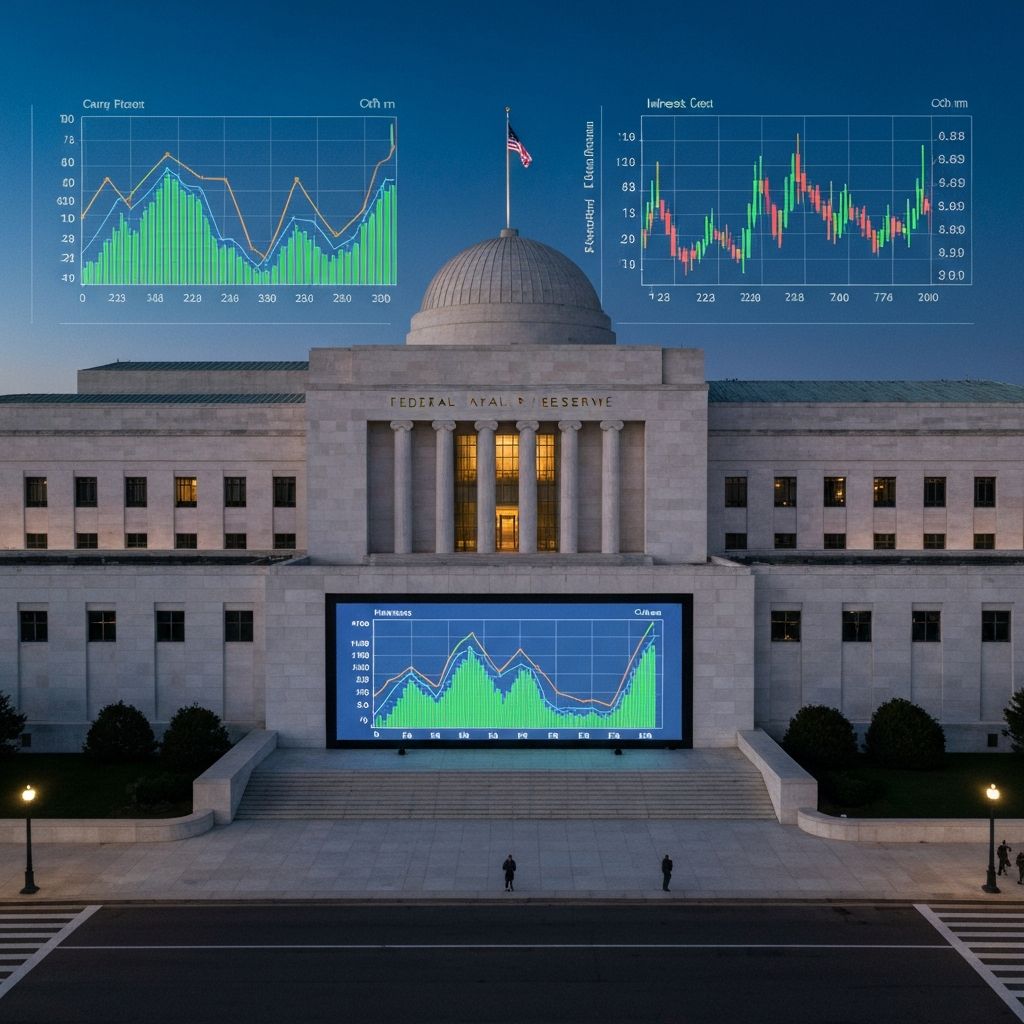
Fed Outlook: December 2025 Cut Priced In?
Market Expectations vs. Fed Guidance
Prediction markets now assign a 68% probability to a Federal Reserve interest rate cut in December 2025, up sharply from 56% just two weeks ago. This shift reflects growing market conviction that inflation pressures will moderate sufficiently to justify monetary policy easing.
Data Driving Market Sentiment
Recent economic indicators support the case for rate cuts:
- Inflation Trajectory: Core PCE inflation declined to 2.6% year-over-year in Q4 2024, down from 3.2% in Q2. The disinflationary trend appears sustainable as housing costs moderate and goods prices stabilize.
- Labor Market Softening: Unemployment ticked up to 4.2% in early 2025, while job openings fell below 7.8 million for the first time since early 2021. Wage growth moderated to 3.6% annually, reducing inflationary pressure from labor costs.
- Growth Concerns: Real GDP growth forecasts for Q1 2025 have been revised downward to 1.4%, suggesting the economy may require monetary stimulus to maintain expansion.
Fed Communication Analysis
Federal Reserve officials have carefully calibrated their messaging to maintain optionality. Chair Jerome Powell's recent speeches emphasized "data dependency" while noting that "inflation progress has been substantial but uneven." This language suggests the Fed is positioning for potential rate cuts without committing to a specific timeline.
However, several regional Fed presidents have begun explicitly discussing the conditions that would warrant easing. Atlanta Fed President Raphael Bostic stated that "if inflation continues on its current trajectory, rate cuts could become appropriate by late 2025."
Market Positioning and Risk
The prediction market pricing implies significant conviction in rate cuts, but several risk factors could derail this scenario:
- Inflation Resurgence: If core inflation reaccelerates above 3%, the Fed would likely delay cuts indefinitely
- Labor Market Resilience: Stronger-than-expected employment growth could extend the current rate regime
- Financial Stability: Any credit events or banking stress would complicate the Fed's policy calculus
Trading Considerations
At 68% probability, the market may be pricing in excessive certainty about the December 2025 cut. Historical Fed behavior suggests that monetary policy changes typically require sustained data supporting the policy shift, and eleven months may not provide sufficient evidence.
Traders should consider that the Fed's decision will be made with data that doesn't exist yet, and economic conditions in late 2025 remain highly uncertain. The implied odds may better reflect market hopes rather than probable outcomes given the Fed's historical tendency toward policy gradualism and data dependency.